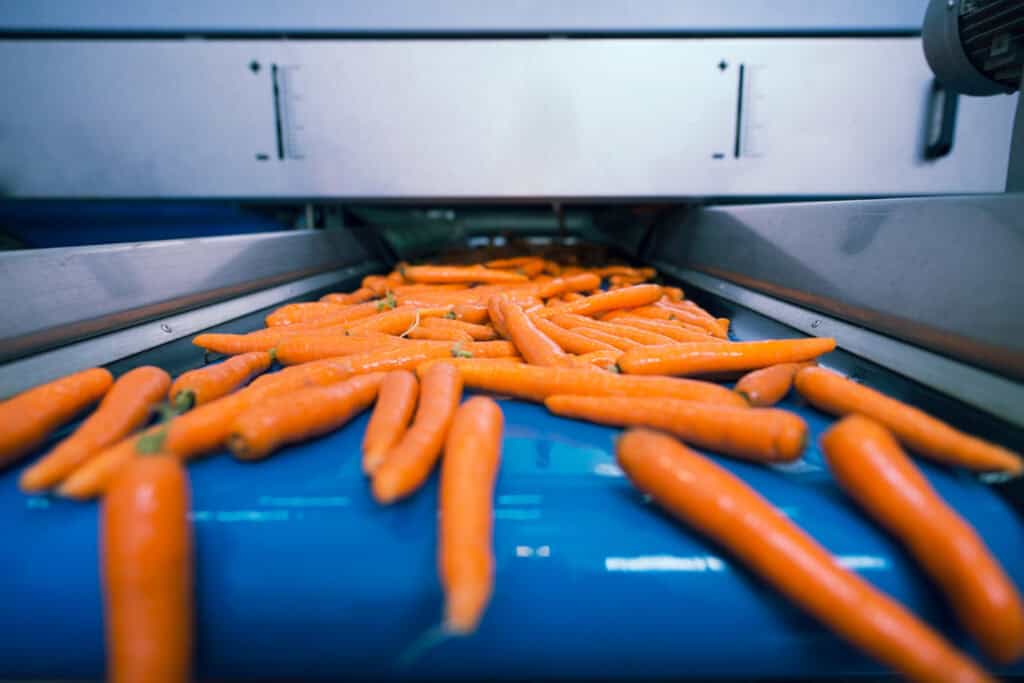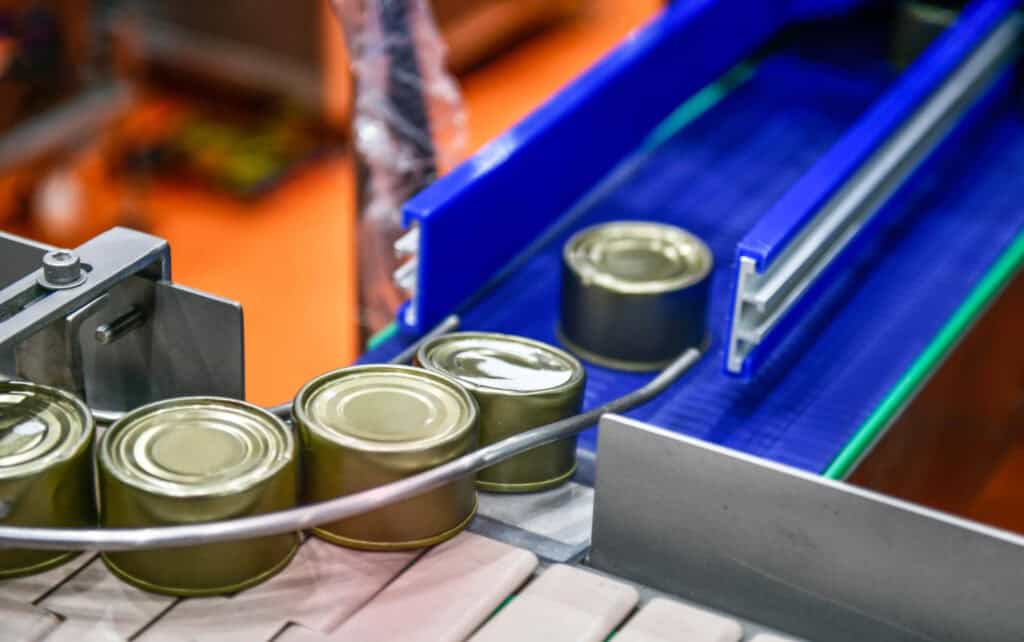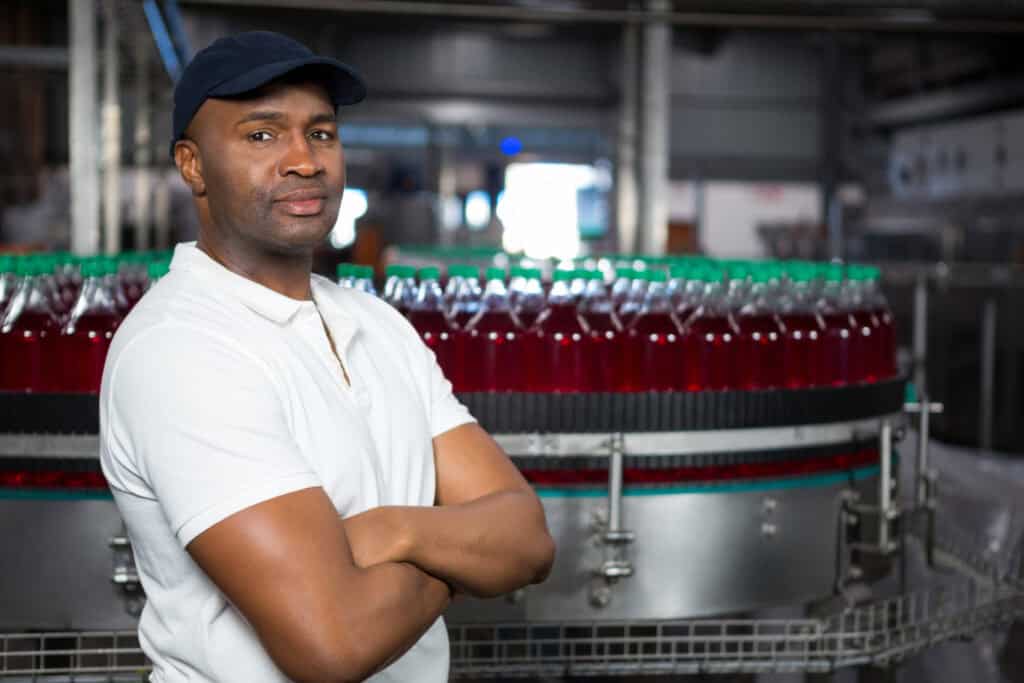In food production, a conveyor belt is a critical tool, but it can also come with hazards.
Mechanisms can catch clothing, even fingers. There’s even a danger to food products. A broken belt can break and lead to product contamination, which is why you should make conveyor belt safety a priority.
Food production facilities are among the most important businesses in the U.S. With more than 300 million people depending on your business, you need to keep your facility clean, safe, and efficient.
Conveyor Belt Safety: What Could Go Wrong?

According to OSHA, conveyors caused 20 workplace fatalities in 2020, and the descriptions are horrific. Everyone working at or near a conveyor belt system is potentially in danger. Conveyor belt hazards include:
- Moving parts or pinch points can catch fingers, hair, or loose clothing, dragging the worker into the machinery, where they can be crushed or strangled.
- A worker can be crushed in the area between a fixed object, like a wall, and a moving belt (or product being moved).
- Packaged food can slide off, fall off, or be thrown from the conveyor belt and hit a worker.
- The electrical components of the conveyor belt mechanism can catch fire.
- Parts of the conveyor belt that slide or press can crush or slice body parts
- Workers horsing around by climbing on the belt can slip and fall or be pulled into the machinery.
Workplace injuries are incredibly common. The CDC estimates that 2.4 million workers went to the emergency room due to workplace injuries in 2019. The costs of workplace injuries are astronomical. Figures from the National Safety Council (NSC) put the total cost of work injuries in 2020 at $163.9 billion. This figure includes wage and productivity losses of $44.8 billion, medical expenses of $34.9 billion, administrative costs of $61.0 billion, and employers’ uninsured costs of $12.8 billion. The cost per death equaled $1,310,000.
10 Conveyor Belt Safety Tips to Keep Workers Safe and Production Moving
All types of conveyors have many moving parts. No matter what type of belt your food production facility uses, you should have safety protocols in place to prevent injury or death. Safety training can mean the difference between expensive work injuries and a smoothly running operation. Here are some of the hazards your workers might encounter and how to avoid injuries.
1. Clear traffic lanes with smart conveyor belt layouts.
Injuries are often attributed to the layout inside the production facility. For example, when pathways are blocked, workers may bump into belts, duck under them, or get clothing caught trying to round a tight corner. To avoid this issue, make sure your belt layout allows for smooth traffic in all plant areas.
2. Keep equipment clean and well-maintained.
Like any moving equipment, conveyor belts need regular maintenance to work smoothly. Damaged equipment can be extremely dangerous, slow, and inefficient. Preventative maintenance will stop workers from trying to fix machinery on the fly and exposing themselves to dangerous conditions. Have all the parts of your conveyor system serviced and cleaned regularly to keep the products running efficiently.
Preventative maintenance will also help you avoid food contamination events. Clean, well-maintained equipment is critical in any food production facility.
3. Check safety equipment.

Built-in conveyor belt safety precautions include guards and covers over gears, chains, and pinch points. As part of your daily routine, have a supervisor verify that guards are firmly in place.
Pinch points are the cause of many workplace injuries. It’s easy for fingers, hair, jewelry, or loose clothing to get caught on a pinch point, and the outcome is rarely pleasant.
4. Make clothing rules.
Anything loose is a hazard, including sleeves, long hair, necklaces, bracelets, rings, tied belts, scarves, or even thin, loose pants. Anything that gets caught in the machinery can drag the worker into the gears…and it happens. Institute a dress code and make sure everyone follows it.
5. Clear the area before starting equipment.
All conveyor systems should be equipped with startup warning signals. Your safety training should cover what the signals mean and how workers should react—by clearing the area around the belt during startup.
6. No horsing around!
It may sound crazy, but it happens. Workers climb, walk, or sit on belts. They may even ride them because it looks like fun. As a result, your conveyor belt safety precautions should include “Don’t play on the equipment.” Climbing on the equipment for any reason should be forbidden in clear, unequivocal language. Conveyor belts are not built to hold humans, and there are far too many ways to be injured or damage the system.
7. Operation by trained employees only.
Only authorized personnel should operate the conveyor belt system. While turning a machine on and off seems like a simple task, you should only allow employees who have been properly trained to work the machinery.
8. Warn against repetitive strain injuries (RSI).
This isn’t directly related to conveyor belts, but most people who do make the same lifting, bending, and stretching motions over and over. Repetitive physical work can lead to painful repetitive strain injuries. Symptoms are progressive and start with pain, stiffness, throbbing, tingling, numbness, cramps, or weakness. Here are a few tips for avoiding RSI you can include in your conveyor belt safety training:
- Advise workers to maintain good posture while working.
- Give your staff frequent short breaks from repetitive tasks.
- Encourage stretching exercises during breaks.
9. Loading safety.
Unsafe loading procedures are another common conveyor safety hazard. Training significantly reduces improper loading incidents. In the pursuit of speed or convenience, workers may load the belt over guards or stand too close to the drive or motor. Ergonomic workstations with lift tables help employees load belts safely and on the right part of the belt. The right equipment reduces injury risk and makes loading more efficient.
10. Provide proper conveyor belt operations and safety training.

Conveyor belt safety may seem like common sense, but accidents happen all the time. Make sure your workers dress properly and know how to operate the belts safely. Your training program should include regular updates and posters promoting conveyor belt safety precautions in prominent areas. Have a protocol in place to help keep visitors safe as well.
Safety First: Building Company Culture
Making conveyor belt safety a priority in your organization means creating a culture where everyone on the floor knows what the alerts mean, emergency stop button locations, what to wear, and what to look for.
To build a culture of safety, you need meaningful worker participation. Give employees easy access to information about how to report conveyor belt safety hazards and allow no manager to retaliate against a worker for reporting a safety hazard or an injury. Ensure that all concerns are addressed and documented. Workers should feel comfortable reporting issues to management and confident that something will be done.
Every employee needs to understand the hazards and how to avoid them. In a thriving safety culture, employees routinely go above and beyond, checking guards, taking other precautions without prompting, removing jewelry and securing their hair before walking onto the floor, and generally remaining alert and vigilant to anything out of the ordinary, from machinery sounds to package snags. Everyone is safer when safety is ingrained and prioritized from the top down.